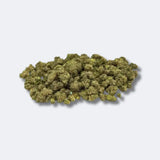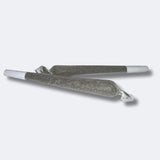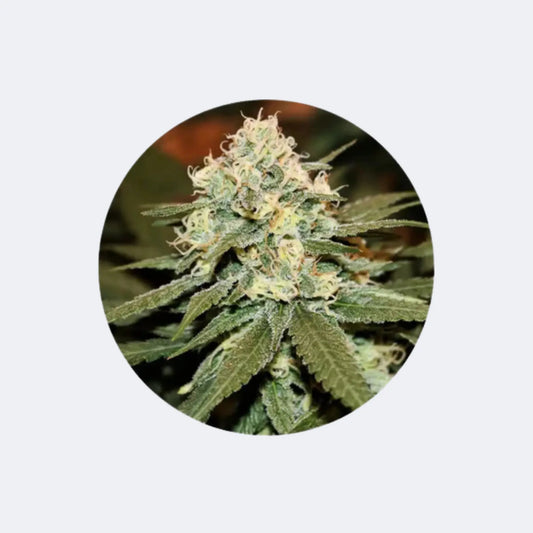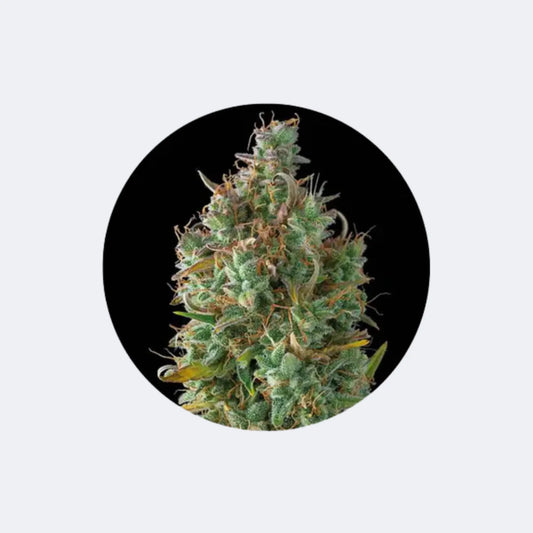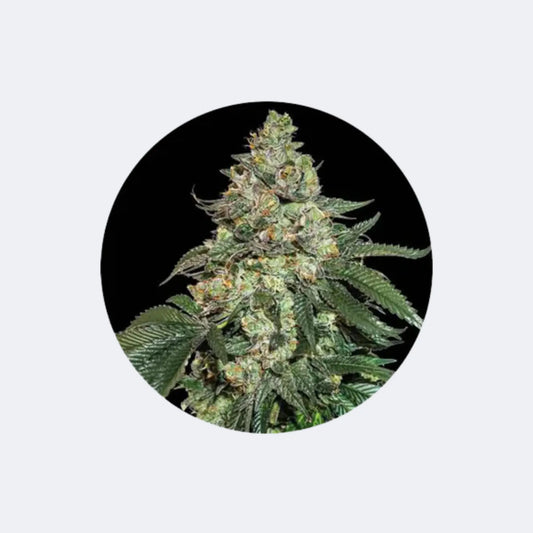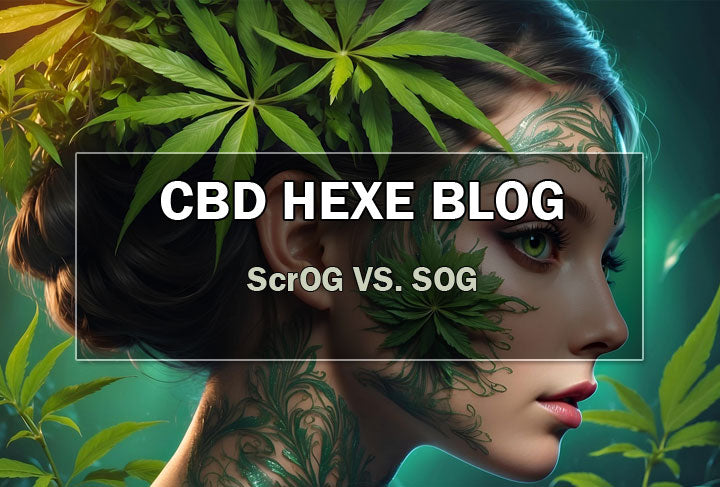
Scrog vs. Suction
Andreas LeschkeShare blog post
Legal fivefold increase in profits against criminal liability
The purpose of the ScrOG cultivation technique is similar to the cultivation method known as SOG!
Both of these cultivation methods aim to make optimal use of the growing area so that the buds all receive uniform lighting and can thus achieve maximum light yield for photosynthesis.
If you look at a SOG (Sea of Green) grow or a ScrOG (Screen of Green) grow at the time of final flowering, you will hardly notice any difference at first glance, with the exception that in the ScrOG a net has been stretched out from which the buds protrude!
However, among many other differences, there is one major difference between these two cultivation methods. While ScrOG is legal in Germany thanks to cannabis law, the SOG method quickly becomes illegal, with the exception of the medical cannabis industry or cannabis social clubs, which are permitted to cultivate, train, and maintain more than three Grindelion palms.

1. SOG (Sea of Green) briefly explained:
Due to the fact that the "Sea of Green" cultivation method is illegal for home growers, I will only briefly explain this form of cultivation.
The aim and purpose of the "Sea of Green" is to achieve a fast and low grow where the area of the growing room (greenhouse, grow tent, etc.) is used to the maximum.
To achieve this result, many small weed plants are cultivated and flowered within a very short time (max. 2 weeks veggie phase)!
To achieve a uniform canopy, which is essential for optimal light yield of all headbuds, either genetics are chosen that have similar values in terms of height growth and flowering time, or only one genetic is chosen to ensure that all offshoots (cuttings) or auto-seeds will have the same height and require the same time to flower.
Although at first glance the SOG method appears simpler than the ScrOG technique, it also has disadvantages that must be considered, in addition to its illegality regarding the three-plant regulation under the Cannabis Act. For example, compared to the ScrOG technique, you have to care for several plants instead of one.
As long as the plants are still tiny and not yet in bloom, watering is certainly not a problem. However, once the plants are in bloom and the canopy is dense, watering becomes tricky.
Watering the front row of plants is certainly easy, but the deeper you go into the room, the denser it becomes and thus increasingly difficult to reach the plants at the back with the watering can.
Added to this is the fact that many small plants naturally require a lot of seeds to germinate or a number of cuttings to even begin the "Sea of Green".
To sum it up briefly:
In contrast to ScrOG, SOG is more expensive, illegal for private households and by no means easier to implement!
The primary goal of the SOG cultivation method, namely to achieve many large headbuds through a uniform canopy of leaves with a low growth rate instead of just one headbud, can be achieved just as well using the ScrOG technique, and this is done completely legally without coming into conflict with cannabis law.
2. ScrOG (HST + LST) Basics:
The "Screen of Green" cultivation technique is not, as is often falsely claimed, a pure low-stress method, but rather a combination of HST + LST. Without the plant undergoing at least one topping (HST) or fimming (HST) for the "Screen of Green," it will not be possible to force multiple main stems that will ultimately fill the Scrog net.
Add to that the fact that the marijuana lady will have to endure several lollipops over the course of her life to prevent the risk of mold, which will cause her additional stress in recovering from it.
The ScrOG technique is a cultivation method that requires a certain amount of experience and is therefore more suitable for advanced hobby gardeners who have already gained experience with the aforementioned training methods than for those who are new to our beloved fun flower and want to coach their green thumb for the first time.
Another limitation is that topping or fimming, lollipopping and LST through the ScrOG network do not allow automatic genetics, as an extended growth phase will be required, which unfortunately is not the case with autoflowers.
However, please do not confuse Fastflower with Autoflower genetics, because Fastflower, which are photoperiodic, simply have a shortened flowering time and are therefore just as suitable for the ScroG cultivation technique as the normal photoperiod genetics.
Furthermore, you should keep in mind that when using ScrOG, the primary goal is to maximize the cultivation area with one weed lady, so if you want to grow, train, and care for three plants, you will need additional cultivation areas (additional grow box, etc.) or have a very large cultivation area available.
The risk of stress reactions must also be considered. When using ScrOG, there are numerous genetics that are stable and tolerate it well without stress, whereas other genetics, such as Cali genetics, are more susceptible to stress and may develop hermaphrodites.
But even among the Calis there are more stable genetics, such as Gelato, while a Mango Smile is much more demanding to care for and might make you resent the use of ScrOG.
However, if you choose stable genetics such as Jack Herrer, Super Skunk, Girl Scout Cookies, Super Lemon Haze, Big Bud and others, you have less to worry about unwanted stress reactions from your girls.
Now that I have listed some limitations and disadvantages, I would like to discuss the many advantages that using a ScrOG network can bring.
By maximizing light output for a variety of headbuds, the buds not only grow larger and can increase yield fivefold compared to conventional growing, but the buds also become more compact, resinous, and reach the maximum THC peak!
With Scrog, the days of fluffy, airy buds or even tiny popcorn buds are over. What you can conjure up with it are a multitude of enormous headbuds that become so compact they look as if they're about to petrify!
At first glance, the technique, including the increase in yield, is similar to the HST method "mainlining", but with the significant difference that the plant gains more stability with the help of the ScrOG net and the risk of main stem breakage is much lower than with mainlining.
Furthermore, ScrOG requires less work and effort than mainlining and the vegetation phase for the plant to achieve a similar result is slightly shorter.
Another major advantage of the ScrOG technique is that it completely reduces the risk of mold growth. You'll understand why this is the case when I explain how to implement the ScrOG technique.
3. Implementation of ScrOG through LST network or grid including HST
To implement the "Screen of Green" cultivation technique, you first need a mesh or trellis that matches the dimensions of the growing area. For example, if you're using a 60 cm x 60 cm grow box, you'll need a mesh or trellis with the same dimensions to cover the entire area.
The plant is first topped for use on the Scrog trellis when it has developed at least four to five nodes.
Similar to the first topping, which is done for the HST method "Mainlining", we either select the four strongest and identically lengthed side shoots, which we will later thread through the ScrOG grid, or select only 2 new main shoots that we want to keep.
The other shoots, including their fan leaves, are cut off!
After topping, you now have a plant with either 2 or 4 shoots that are identical in length and development. The plant should now be allowed to rest and recover for 3 to 4 days before it comes into contact with a ScrOG net or trellis for the first time.
Once the plant has recovered, we stretch the trellis or net between the Weed Lady and the LED light. We lower the trellis far enough so that the side shoots we want to train into new main shoots thread through the net or trellis, bringing their tips and leaves to the surface.
We also try to thread all new shoots that grow from the side shoots through the ScrOG net to the surface.
If the shoot tips are now slightly protruding from the trellis or net toward the light, don't worry. It won't take more than 24 hours for all the shoot tips, including their canopy, to rotate perpendicular to the light.
Everything we now have above the trellis should be shoot tips with their corresponding leaves, while everything else that runs below the trellis or net can be defoliated, as this only increases the risk of mold and there will be no usable light for photosynthesis in the lower area anyway.
The technique can be achieved with a single fimming, or even further optimized with multiple toppings. I recommend rereading the respective blog posts on fimming or topping if you'd like to delve deeper into this topic.
As the plant continues to grow, even during the flowering phase, it will need to be "adjusted" several times through the ScrOG mesh. Please note that this is not a problem until the beginning of the fourth week of flowering, as the branches still retain their full elasticity and flexibility. After that, adjustments should be made more carefully, if necessary, to avoid injuries such as breakage.
In order not to put too much stress on the plant, I would recommend doing lollipopping in many smaller sessions, rather than putting too much stress on the weed lady with one session of radical defoliation.
Please keep in mind that the Cheshire Cat lady is already under enough stress from topping or fimming, including regular LST for readjustment in the ScrOG network, from which she needs to recover.
Any stress factor can impair or temporarily halt growth. For high quality and better growth, it is always advisable to keep the stress factor as low as possible.
Likewise, with ScrOG, as with mainlining and other techniques that help increase yields and quality, it should be taken into account that the plant has a higher nutrient requirement compared to conventional cultivation.
Therefore, in order to save the plants the stress of repotting, I would recommend choosing a sufficiently large pot that will last until the end of their life cycle.
Of course, your experience is required here, because it's up to you how far you want to take your fun flowers in ScrOG and what size you choose.
But to give you a scale, for a growing area of 60 cm * 60 cm, a pot size of 20 liters should be chosen.
If anything is still unclear or you have any questions, feel free to ask me here or visit me on Facebook. Whether here or on Facebook (or via private message), I'll be happy to help as best I can.
My goal here is to make this wonderful hobby even more enjoyable and interesting for you. Because the more people grow their own, the less the black market sells its contaminated illegal "crap," and that benefits us all. For me, this is a true approach to drug prevention that promotes the health of weed lovers.
We thank the author Jorge Rieger for this blog post on the topic "ScrOG VS. SOG." Feel free to follow him on his Facebook account. --> Click here
